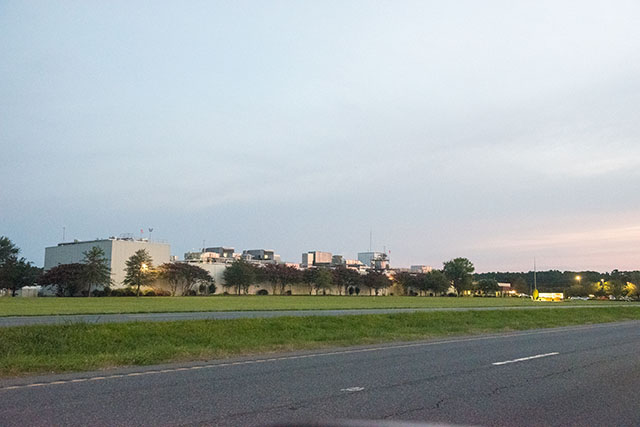By Carol Vaughn —
Chris Linton’s father, Claude, has been growing chickens for Tyson Foods since the Temperanceville processing plant sign had the Holly Farms logo instead of the current brand.
They are small growers, with two houses just off the highway near Hallwood, with a capacity of 42,000 chickens.
Claude Linton, 79, won an award a few years ago as being one of the longest-tenured growers for this Tyson branch, according to his son, who farms alongside his father.
Still, in October, they received a letter saying Tyson will not offer them a new broiler production contract when their current contract expires Jan. 24.
“It’s all he has ever known,” Chris Linton said about his father in a recent interview.
“I’ve been in the chicken house since I could walk,” said Chris Linton, who is 43.
Their most recent contract was for three years, while Linton said “the new guys” — larger growers — have 15-year contracts.
In an emailed statement, a Tyson spokesperson said: “For decades, Tyson has contracted with independently-owned farms. We depend on more than 11,000 independent farmers and ranchers every day. Our farmers play a vital role in our success and we are critical to theirs.
“When a broiler production contract nears the agreed-upon end date, Tyson may deliver a written 90-day notice of ‘expiration and subsequent non-replacement,’ which is required as part of the Packers and Stockyards Act, notifying the producer that a new contract will not be offered by Tyson upon conclusion of the current agreement.
“Another requirement of the PSA is to give the producer a reason for Tyson’s decision to allow the contract to expire.”
The reason given in the Oct. 11 letter the Lintons received from Tyson senior live production manager Thomas David is that the Temperanceville facility has more housing than needed for broiler production.
“It’s just not right,” Chris Linton said.
Linton blames decisions about poultry farm regulations approved by the Accomack County Board of Supervisors, in part, for the situation.
“They gave all these people the permits to build. They built 180 houses, mega-farms,” he said.
The newer, larger houses can produce 55,000 chickens, according to Linton.
“Most of them aren’t the Eastern Shore people that are getting these farms,” he said.
“It’s not a performance issue, at least it’s not on my farm,” he said, adding, “We place top. We grow a pretty bird. We’re ethical, as in treatment of the birds. They don’t need us.”
Their farm is only a mile from the Temperanceville processing plant.
“It’s not like they have to go far out of the way to place chickens,” Linton said.
Facing unemployment in the new year, Chris Linton is exploring whether there are any options to grow chickens for another company.
“The guys that built this company, they’re getting the shaft,” he said, adding, “…I’m heartbroken.”
The Accomack County Board of Supervisors in February 2016 approved a zoning ordinance amendment that actually placed stricter regulations on the building of chicken houses than the county had in the past, including a new requirement for a maximum density of one house per five acres and increased setbacks, among other new rules.
The planning commission recommended the changes amid concerns raised by the public about an upsurge in applications to build new chicken houses in the county.
“When all these regulations came about, we heard the public and the public’s input and the restrictions on these larger-size farms were more restrictive than on the smaller operations,” said Accomack County Board of Supervisors Chairman Ron Wolff Thursday.
“To say the county is at fault, I just don’t buy into that. The idea of any business, whether it’s poultry or a restaurant business that I was in, if you’re not a good businessman and you don’t do what you need to do to perform, you’re not going to stay in business,” Wolff said, adding, “I definitely feel for them, because one of the repercussions of it is, now what do they do with those ones, or twos, or five (house) farms— nobody’s going to want to buy them, so they are going to sit empty; they’re going to become dilapidated and that becomes an eyesore for the county. So I see both sides.”
By 2019, the expansion appeared to be nearing an end.
Since July 1, 2014, 245 new chicken houses were authorized by zoning permits — 218 had been built as of Feb. 1, 2019, according to a report made to the board of supervisors from the county planning department.



